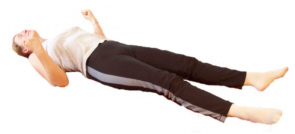Autogenic Training, Progressive Muscle Relaxation & Mindfulness Meditation
Get to Know the Best Relaxation Exercises!
The most natural form of stress coping is relaxation, as a person cannot be both stressed and relaxed at the same time. The condition of relaxation is unspecific, it is thus not important how one relaxes but that one relaxes.
On this album you will get to know nine different exercises of three most effective relaxation techniques of our time:
Autogenic Training, Progressive Muscle Relaxation and Mindfulness Meditation. Relax and find out which one works the best for you.
Enjoy the guided relaxation of the Psychologist Henrik Brandt, German Diplom degree, and the relaxation music of Steffen Grose.
Try it out with our YouTube video if you like!!
Relaxation & Meditation Tracks
1 Introduction
2 Autogenic Training - Heaviness
3 Autogenic Training - Warmth
4 Autogenic Training - Breathing
5 Progressive Muscle Relaxation - Arms
(Jacobson Guided Relaxation)
6 Muscle Relaxation - Sitting Position
(Jacobson Short Relaxation)
7 Muscle Relaxation - Lying Position
(Jacobson Short Relaxation)
8 Mindfulness Meditation - the Belly
9 Body Scan (Mindfulness Awareness Meditation)
10 Mindfulness Meditation - the Forehead
Autogenic Training
What is Autogenic Training?
Autogenic training was developed by the Dr. J.H. Schultz in Berlin in the 1920's. With the help of this relaxation technique one can learn to set oneself in a pleasant state of deep relaxation in short time period.
The term "Autogenic" is derived from the Greek words "autos" = "self" and "genos" = "to create," meaning that in Autogenic training one creates something by oneself. It is not hocus pocus or magic - the bodily and psychological effects of Autogenic training have been scientifically proven.
Autogenic training is based in particular on the finding that bodily processes can be influenced through concentration (unity of body and mind).
In Autogenic training, one tries to use concentration to perceive and stimulate bodily reactions that are accompanied by a pleasant state of relaxation. One learns e.g., to perceive the reduction in muscle tension that automatically accompanies every type of relaxation and to achieve an even deeper relaxation effect by concentrating on this sensation.
Autogenic "training" places emphasis on practice: this relaxation technique can only be learned through regular, systematic training.
Mindfulness Meditation
What is Mindfulness Meditation?
In the Mindfulness Meditation you are guided to focus your awareness on the present - here and now, accepting your sensations and feelings in the moment just as they are.
Mindfulness (Awareness) means, to accept consciously everything what happens at the moment without judging this or questioning critically. You learn an internal attitude and consciousness to perceive the present in his diversity. By practicing the Mindfulness Meditation you can learn to react from a strengthened own position with more calmness to the changes and stress situations of the everyday life.
Special exercises of the Mindfulness Meditation refer to the observation and perception of your breathing and your body as well as the sensations in the moment, thoughts as well as feelings.
In one of the best known Mindfulness Meditation Exercises, the Body-Scan, you "scan" your body bit by bit from the toes up to your head.
Progressive Muscle Relaxation
What is Muscle Relaxation?
With progressive muscle relaxation you bring yourselves in a pleasant state of relaxation by progressively tensing and then relaxing different muscle groups through your entire body.
muscle relaxation lying position 
Relaxing your arms (Example Exercise of Muscle Relaxation)
Close your eyes , if you like it, and guide your attention to your right arm. At first just try to perceive your right arm and hand, becoming aware of the feelings and sensations in this area of your body. Notice the places at which your arm touches your body or the armrest.
And now make a fist with your right hand, hold the tension for a moment, be aware of the feelings of tension in your right forearm and in the right hand.
And now let go again, relax and soften your hand and your forearm. Try to notice, how your musculature is relaxing completely by itself. You don't have to force or to do anything actively, accept your experience just as it is. Soften and relax your fingers, be aware of the decreasing tension in the thumb, in the forefinger, middle finger, in the ring finger and in the small finger.
Once again, make a fist with your right hand. Hold the tension for a moment, hold it, hold it - and now let go again, be aware of the different feelings of tension und relaxation....
